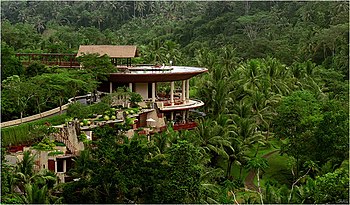Erythro-9,10-Dihydroxystearic acid [3639-32-5]
Name erythro-9,10-Dihydroxystearic acid
Synonyms (9R,10S)-rel-9,10-Dihydroxyoctadecanoic acid
Name in Chemical Abstracts Octadecanoic acid, 9,10-dihydroxy-, (9R,10S)-rel-
CAS No 3639-32-5
EINECS No
Molecular formula C18H34O4
Molecular mass 330.51
| KMnO4/NaOH |
Literature
A. Lapworth und E. N. Mottram, J. Chem. Soc., 1925,1628-31
| Reaction type: | addition to alkenes, oxidation, cis-hydroxylation |
| Substance classes: | alkene, alcohol, natural product |
| Techniques: | stirring with magnetic stir bar, filtering, recrystallizing, extracting |
Instruction (batch scale 10 mmol)
Equipment
5 L beaker or Erlenmeyer flask, heatable magnetic stirrer, magnetic stir bar, suction flask,
Buechner funnel, mortar, desiccator
Substances
oleic acid (techn. 90%) 3.14 g (equivalent to 10.0 mmol pure oleic acid)
(oleic acid, pure: mp 16 °C,
bp 193 °C/1.6 hPa)
potassium permanganate 2.50 g (15.8 mmol)
sodium hydroxid 3.14 g (78.5 mmol)
hydrochloric acid (conc., 36%) 94 mL
sodium sulfite or sodium disulfite
petroleum ether (bp 60-80 °C) about 200 mL
ethanol (bp 78 °C) for recrystallizing
Reaction
3.14 g (10.0 mmol) oleic acid (techn. 90%) are added to a solution of 3.14 g (78.5 mmol)
NaOH in 320 mL water in a 5 L beaker with a magnetic stir bar. The mixture is heated under
stirring until a clear solution is formed. After the addition of 2.5 L ice-cold water, 250 mL 1%
potassium permanganate solution are added within 1 minute under stirring at a temperature of
10 °C. After 5 minutes so much solid sodium sulfite oder sodium disulfite is added, that the
excess of potassium permanganate is reduced. Afterwards the solution is acidified with 94 mL
conc. hydrochloric acid. The solution becomes colourless, and a colourless fluffy precipitation
is formed.
Work up
The precipitation is sucked off and dried. Crude yield: 3.01 g, mp 81-88 °C
The crude product is washed with 50 mL petroleum ether (60-80 °C) and dried under reduced
pressure. The dried product is powdered in a mortar and digested with 100-150 mL petroleum
ether in a beaker. Thus the sturated carboxylic acids contained in the oleic acid as impurities
are removed. The dihydroxystearic acid is insoluble in petroleum ether. It is sucked off and
recrystallized from ethanol.
Yield: 2.74 g (8.70 mmol, 87%); mp 132 °C; colourless powder
Yield71%Target product mass0.26gSum of input masses290gMass efficiency0.89mg/gMass index1100g input / g productE factor1100g waste / g product
Equipment |
| beaker 500 mL | heatable magnetic stirrer with magnetic stir bar | |||
| suction flask | suction filter | |||
| mortar | exsiccator with drying agent |
| TLC: crude product | |
| TLC layer | Merck silica gel 60 F254 |
| mobile phase | EtOAc |
| detection | immerse into solution of 2.7 g KMnO4, 18 g K2CO3, 216 mg NaOH in 274 mL H2O, heating with air dryer |
| Rf (educt) | 0.87 |
| Rf (product) | 0.67 |
| 1H-NMR: erythro-9,10-Dihydroxystearic acid | |||
| 250 MHz, DMSO-d6 | |||
| delta [ppm] | mult. | atoms | assignment |
| 0.86 | t (3J = 6.4 Hz) | 3 H | CH3 |
| 1.2-1.6 | m | 26 H | other CH2 |
| 2.18 | t (3J = 7.3 Hz) | 2 H | 2-CH2 |
| 3.25 | m | 2 H | 9-CH-OH, 10-CH-OH |
| 2.45 | s | 6 H | DMSO |
| 13C-NMR: erythro-9,10-Dihydroxystearic acid | |||
| 62.5 MHz, DMSO-d6, 373°K | |||
| delta [ppm] | assignment | ||
| 13.0 | C18 (CH3) | ||
| 21.2 | C17 (CH2 | ||
| 23.9 | CH2 | ||
| 24.8 | CH2 | ||
| 27.9 | CH2 | ||
| 28.0 | CH2 | ||
| 28.3 | CH2 | ||
| 28.4 | CH2 | ||
| 28.6 | CH2 | ||
| 30.6 | CH2 | ||
| 31.8 | CH2 | ||
| 33.2 | C2 | ||
| 73.4 | C9, C10 (CH-OH) | ||
| 173.4 | C1 (COOH) | ||
| 38.5-40.5 | DMSO-d6 | ||
| IR: erythro-9,10-Dihydroxystearic acid | |||
| [KBr, T%, cm-1] | |||
| [cm-1] | assignment | ||
| 3500-2500 | O-H valence, superimposed on C-H valence | ||
| 1716 | C=O valence, carboxylic acid | ||
















